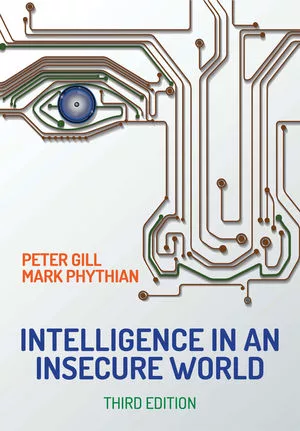It’s in the Mail – Oh, Oh!

Mail bombs continue to be a threat to enterprises, law offices and government agencies. There are obvious signs of packages and letters that may be threatening.
Every day, somewhere in the United States, a suspicious package or letter ends up caught by the U.S. Postal Service, in U.S. Customs, in the transportation pipeline or at an enterprise mailroom.
Some are mail bombs or resembling a mail bomb. Others contain biological materials or the threat of containing a biological or chemical threat.
Real mail bombs are usually set to explode immediately on opening, with the intention of seriously injuring or killing the recipient. According to Federal Bureau of Investigation (FBI) sources, parcel bombs often have excessive postage so the bomber can avoid over-the-post office-counter service, or because that person doesn’t want the package returned postage due. Letter bombs may feel rigid, or appear uneven or lopsided. Package bombs may have an irregular shape, soft spots or bulges. Oil or grease stains are also indicated as warning signs.
A related threat is mail containing unidentified powders or chemicals. In some cases, these turn out to be harmless, sent as a joke or hoax threat.
According to international police records, the world’s first mail bomb was from Martin Ekenberg, who, in August 1904, targeted business CEO Karl Fredrik Lundin in Stockholm. It was made of a box loaded with bullets and explosives.
MAIL BOMBS
The most famous? Theodore Kaczynski, the “Unabomber,” killed three and injured 23 in a series of mail bombings in the U.S. from the late 1970s to the early 1990s.Early this year, a bomber calling himself “The Bishop” sent several unassembled bombs to financial firms in the United States. A man arrested last April has been linked to “The Bishop,” the mysterious and elusive threat who sent mail bombs and threatening letters since 2005. He once worked as a mail carrier.
On the biological and chemical side, the most infamous attack was the 2001 anthrax attacks in the U.S. Occurring over several weeks from Sept. 18, 2001, letters containing anthrax spores were received by several news media offices and two U.S. Senators, killing five people and infecting 17 others. While there are ongoing lawsuits, the crime remains unsolved.
The anthrax attacks came in two waves. The first set of anthrax letters had a Trenton, N.J. postmark. Five letters are believed to have been mailed at that time, to ABC News, CBS News, NBC News and the New York Post, all located in New York City; and to the National Enquirer at American Media in Boca Raton, Fla. The first person who died from the mailings worked at a tabloid called the Sun in Florida. Only the New York Post and NBC News letters were found; the existence of the other three letters, according to law enforcement officials, is inferred from the pattern of infection. Scientists examining the anthrax from the New York Post letter said it appeared as a coarse brown granular material looking like Purina Dog Chow.

Anthrax is at the top of biological and chemical threats sent through the mail. Shown is the bacillus. U.S. anthrax attacks have cost lives and never have been solved.
BIOCHEMICAL ATTACKS
Two more anthrax letters, bearing the same Trenton postmark, were dated October 9, three weeks after the first mailing. The letters were addressed to two Democratic Senators, Tom Daschle of South Dakota and Patrick Leahy of Vermont. The Daschle letter was opened by an aide on October 15, and the government mail service was shut down. The unopened Leahy letter was discovered in an impounded mailbag on November 16. The Leahy letter had been misdirected to the State Department mail annex in Sterling, Va.More potent than the first anthrax letters, the material in the Senate letters was a highly refined dry powder – about one gram of nearly pure spores. In these incidents, more than 22 people developed anthrax infections, with 11 life-threatening. Five died of inhalation anthrax.
The anthrax letters are believed to have been mailed from Princeton, N.J. In August 2002, investigators found anthrax spores in a city street mailbox located at 10 Nassau Street near the Princeton University campus.
Government and enterprise mailrooms now are more sensitive to screening mail.
Chief security officers have established guidelines and precautions to address the risks associated with explosive and biological agents and the mail.
Among the recommendations:
Security operations and mailroom personnel should more carefully open mail and pay attention to the contents. The use of automated systems or, at least, a letter opener is recommended, rather than human fingers.
If security has any doubt about the safety of a piece of mail, officers or mailroom personnel should not open it. Law enforcement officials suggest that they place the suspect mail in a plastic bag, minimize its movement, isolate the bag and call 911.
Mail that meets the following criteria should be considered suspect:
- Unexpected package deliveries.
- Mail addressed to individuals who are no longer at your address, or to people who never were.
- Mail without a return address.
- Mail with a postmark that does not match a return address.
- Mail with restrictive endorsements, such as "For the attention of" or "Personal and Confidential" or "For the addressee only," etc.
- Mail that is leaking any substance, has a peculiar odor, is oddly shaped or has other obvious abnormalities. DO NOT sniff any envelope or package.
- Mail with a foreign postmark or foreign postage.
- Mail with obvious excess postage.
- Mail with the written hallmarks of a disturbed individual (bizarre writing).
- Mail from a correctional institution.

An on-site system screens letters and packages for the biological threat of anthrax. The technology is polymerase chain reaction, which detects the presence of anthrax spores and provides results by analyzing the DNA of an organism. Photo courtesy of Smiths Detection
- Do not clean the powder up. Keep others away.
- Wash hands with soap and water.
- Do not brush off your clothes.
- Notify 911.
- Remove clothing and place in a plastic bag as soon as possible.
- Do not use bleach or other disinfectant on your skin.
- Make a list of all people who had contact with the powder and have available to give to the official who responds to the scene.
- Do not panic.
For anthrax to be effective as a covert agent it must be aerosolized into particles between 0.4 and 2/10,000ths of an inch, smaller than a red blood cell. This is very difficult to do, and requires a great deal of technical skill and special equipment. If these small particles are inhaled, life-threatening lung infection can occur, but prompt recognition and treatment are effective. Anthrax is not communicable. It cannot be transferred from one person to another.

Self-contained, prefabricated, pre-wired and UL-listed, mail screening booths allow for inspectors to safely receive and open mail, isolating the rest of the staff and facility from exposure if bio-hazards are delivered. Photo courtesy of Delta Scientific
DETECTION SYSTEMS
On the leading edge are systems for U.S. embassies. For instance, Delta Scientific has a bio-defense Mail Room Inspection BioBooth for U.S. embassies in Europe. Self-contained, prefabricated, pre-wired and UL-listed, the BioBooth mail screening booth has been designed for inspectors to safely receive and open mail, isolating the rest of the staff and facility from exposure if bio-hazards are delivered.“Designed with major input from the U.S. Department of State, our new BioBooth concept will be the first line of biological weapons defense for many governmental and corporate organizations worldwide,” reported David Dickinson of Delta Scientific. “This is extremely important when one realizes the lethality of a single gram of anthrax spores and the ease of distributing it by mail.”
The Mail Room Inspection BioBooth will be typically installed outside of a main building or inside a shipping and receiving warehouse. When attacked by biological hazards, facilities such as post offices will no longer face a lengthy closure. Upon discovering contaminated mail, the booth can be sealed, quickly unbolted, and safely removed from public areas for decontamination.
This approach features outer and inner workrooms with sealed doors, lighting and hospital style floors. Each room has long countertops and open spaces for staging, sorting and prospective decontamination. A bench top-mounted HEPA-filtered laboratory hood with UV sterilization is pre-installed and may be flexibly positioned to isolate and protect the inspector opening the packages. The booths have controllable drainage and an internal wash-down hose bib. An optional sub-floor basin catches the contaminated liquid for removal through a valve into a disposal container.
From Pitney-Bowes, its mail screening solutions help protect staff, facilities and operations from potential threats in the mail stream. Services include:
- Mail and package screening services.
- Chemical, biological, radiological, nuclear and explosive biohazard containment facilities.
- Custom-designed, on-site/off-site, negative pressure, HEPA-filtered digital mail.
The technology at the heart of Mail Sentry is polymerase chain reaction (PCR), which detects the presence of anthrax spores and provides results by analyzing the DNA of an organism. It is the same technology used in the U.S. Postal Service screening system and the Smiths Detection Bio-Seeq biological agent detector. PCR technology has the ability to detect a single bacterial cell. In addition, a highly sophisticated processing cartridge, manufactured by Cepheid, enables samples to be automatically processed, eliminating false positives that lead to evacuations.
Another source, SoBran, is under contract to numerous high-level government organizations. It says it screens an average of 280,000 letters and parcels each month. SoBran screens letters, flats, parcels and packages delivered by the U.S. Postal Service and commercial carriers.
And American Innovations has a CXIS series of computerized x-ray inspection systems. Their x-ray systems are conveyor driven and equipped with latest algorithms to enhance detection and imaging performance. Scanning letters, packages, luggage, pallets and air cargo containers for bombs, weapons and other illicit contraband is easily achieved with this new line of x-ray inspection systems.
Looking for a reprint of this article?
From high-res PDFs to custom plaques, order your copy today!




